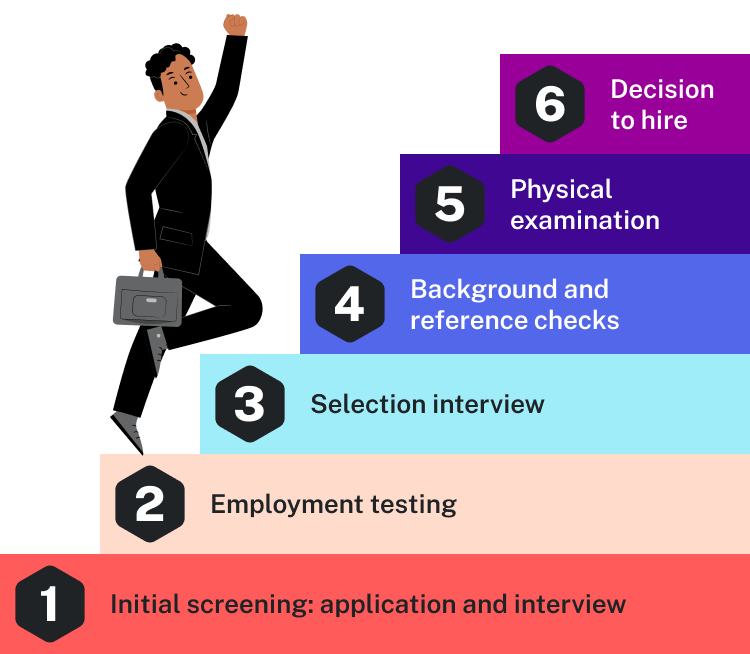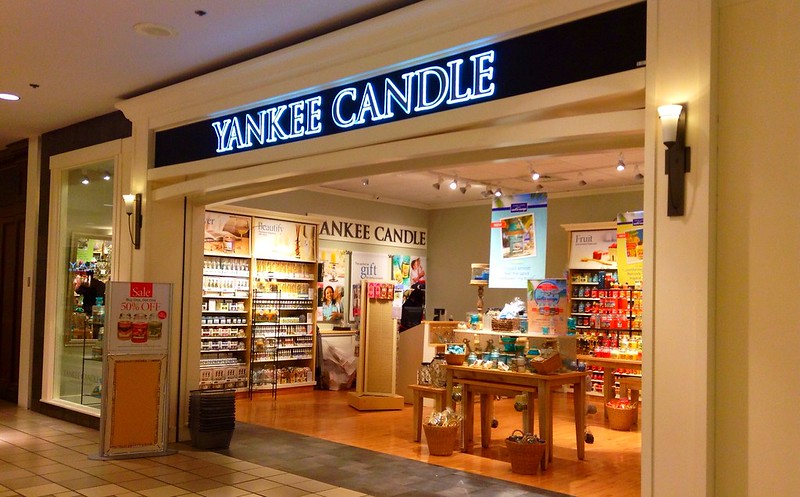Selection
After a firm has attracted enough job applicants, employment specialists begin the selection process. Selection is the process of determining which people in the applicant pool possess the qualifications necessary to be successful on the job. An applicant who can jump over each step, or hurdle, will very likely receive a job offer; thus, this is known as the successive hurdles approach to applicant screening. Alternatively, an applicant can be rejected at any step or hurdle.
The Job Description
In order to evaluate the fit, it is important for managers to create a list of relevant criteria for each position before beginning the recruitment and selection process. Each job description should be associated with a list of critical skills, behaviors, or attitudes that will make or break the job performance. When screening potential employees, managers need to select based on cultural fit and attitude as well as on technical skills and competencies. There are some U.S. companies, such as Southwest Airlines, that hire primarily on the basis of attitude because they espouse the philosophy that you hire for attitude and train for skill. According to former CEO Herb Kelleher, “We can change skill levels through training. We can’t change attitude.”[1] After determining the most important qualifications, managers can design the rest of the selection process so that it aligns with the other human resource processes.

Initial Screening
Managers strive to identify the best applicants at the lowest cost. Companies have a range of processes for screening potential employees, so managers must determine which system will generate the best results. The methods of screening vary both in levels of effectiveness and in cost of application. In addition to biographical information, companies can conduct background checks or require testing. Because of the costs associated with these measures, companies try to narrow down the number of applicants in the screening process, choosing only the most suitable candidates for interviews. In the United States, the selection process is subject to Equal Employment Opportunity guidelines, which means that companies must be able to show that the process is valid, reliable, related to critical aspects of the job, and nondiscriminatory. Taking such measures helps companies avoid litigation.
Selection Tests
For some companies, understanding the applicant’s personality, values, and motivation for wanting the job is a critical part of the hiring decision. For some positions, although technical aptitude is required, the candidate’s attitude is often just as important. Under these circumstances, companies may use behavioral assessments and personality profiles. The goal of these assessments is to predict how the individual will interact with their coworkers, customers, and supervisors. Tests such as the IPIP (International Personality Item Pool) and Wonderlic Personnel Tests are popular tools that provide an analysis of an applicant’s personality, attitudes, and interpersonal skills. Other selection tests used in hiring may include cognitive tests, which measure general intelligence, work sample tests, which demonstrate the applicant’s ability to perform specific job duties, and integrity tests, which measure honesty.
Yankee Candle Company

HR Senior Vice President Martha LaCroix of the Yankee Candle Company uses personality assessments to make sure that prospective employees will fit the firm’s culture. LaCroix was helped by Predictive Index (PI) Worldwide in determining Yankee Candle’s best- and worst-performing store managers for developing a best practice behavioral profile of a top-performing store manager.[2] The profile was used for personality testing and to develop interview questions that reveal how an applicant may behave in certain work situations.
Interview Structure
As mentioned, it is important to first define the skills and attributes necessary to succeed in the specified position, then develop a list of questions that directly relate to the job requirements.
A best practice when conducting interviews is to follow a structured framework in which each applicant is asked the same questions and is scored with a consistent rating process. Having a common set of information about the applicants to compare after all the interviews have been conducted helps hiring managers avoid prejudice and ensure that all interviewees are given a fair chance.[3] Structured interviews also help managers avoid illegal questions, such as asking a woman whether she is pregnant. Many companies choose to use several rounds of screening with different interviewers to discover additional facets of the applicant’s attitude or skill as well as develop a more well-rounded opinion of the applicant from diverse perspectives. Involving senior management in the interview process also acts as a signal to applicants about the company culture and value of each new hire. There are two common types of interviews: behavioral and situational.
Behavioral Interview
In a behavioral interview, the interviewer asks the applicant to reflect on their past experiences.[4] After deciding what skills are needed for the position, the interviewer will ask questions to find out if the candidate possesses these skills. The purpose of behavioral interviewing is to find links between the job’s requirement and how the applicant’s experience and past behaviors match those requirements. The following are examples of behavioral interview questions:
- Describe a time when you were faced with a stressful situation. How did you handle the situation?
- Give me an example of when you showed initiative and assumed a leadership role?
Situational Interview
A situational interview requires the applicant to explain how they would handle a series of hypothetical situations. Situational-based questions evaluate the applicant’s judgment, ability, and knowledge.[5] Before administering this type of interview, it is a good idea for the hiring manager to consider possible responses and develop a scoring key for evaluation purposes. Examples of situational interview questions:
- You and a colleague are working on a project together; however, your colleague fails to do his agreed portion of the work. What would you do?
- A client approaches you and claims that they have not received a payment that supposedly had been sent five days ago from your office. They are very angry. What would you do?
Background and Reference Check
Background and reference checks are a way for employers to verify the accuracy of information provided by applicants in résumés and applications. Information gathered in background checks may include employment history, education, credit reports, driving records, and criminal records. Employers must obtain written consent from the applicant before conducting a background check, and the information gathered in a background check should be relevant to the job.
Physical Exams and Drug Testing
A firm may require an applicant to have a medical checkup to ensure they are physically able to perform job tasks. Drug testing is common in the transportation and health care industries. Southwest Airlines, BNSF Railway, Texas Health Resources, and the U.S. Postal Service use drug testing for reasons of workplace safety, productivity, and employee health.
Decision to Hire
If an applicant progresses satisfactorily through all the selection steps, a decision to hire the person is made; however, the job offer may be contingent on passing a physical exam and/or drug test. The decision to hire is nearly always made by the manager of the new employee.
It is important for companies to use metrics to assess the effectiveness of their selective hiring process. This provides a benchmark for future performance as well as a means of evaluating the success of a particular method. Companies can continuously improve their selection practices to ensure that they hire people who will successfully meet job requirements as well as fit into the organizational culture. If companies are not successful in their hiring practices, high turnover, low employee morale, and decreased productivity will result. Thus, companies need to assess their hiring in terms of technical requirements as well as cultural fit. Evaluating the hiring process will help ensure continuing success, because human capital is often a company’s most important asset.
- Pfeffer & Viega, Putting People First for Organizational Success, 1998 ↵
- “Yankee Candle Improves Performance by 40% with the Predictive Index®,” https://olivergroup.com, accessed February 8 2018; Eric Krell, “Personality Counts,” HR Magazine, vol. 50 (November 2005), pp. 46–52. ↵
- Smith G. ↵
- Janz, 1982 ↵
- Latham & Saari, 1984 ↵